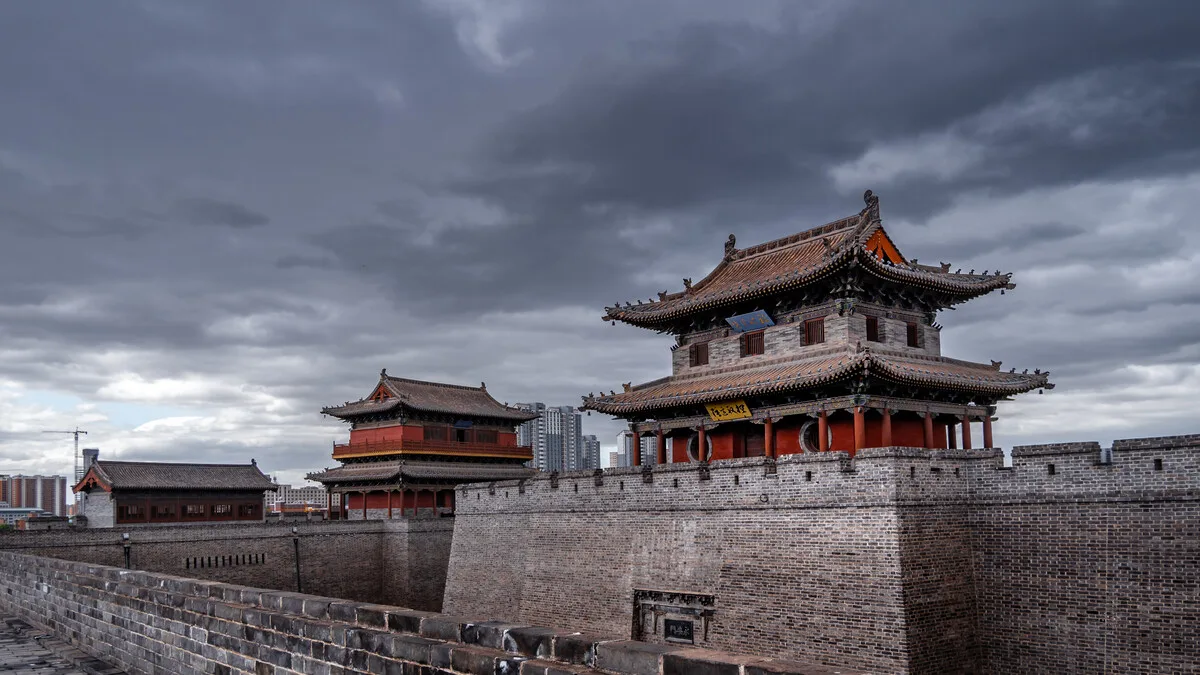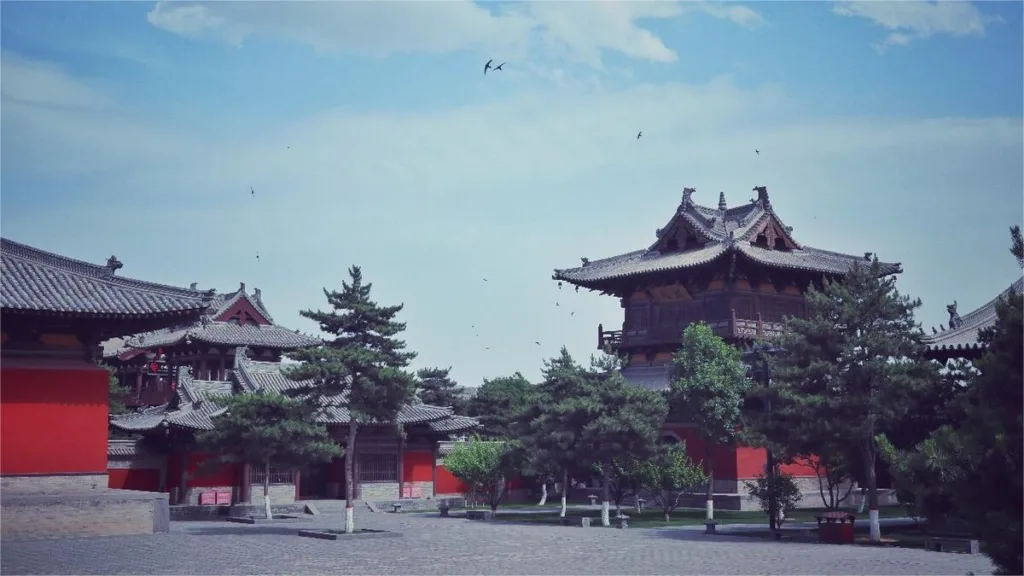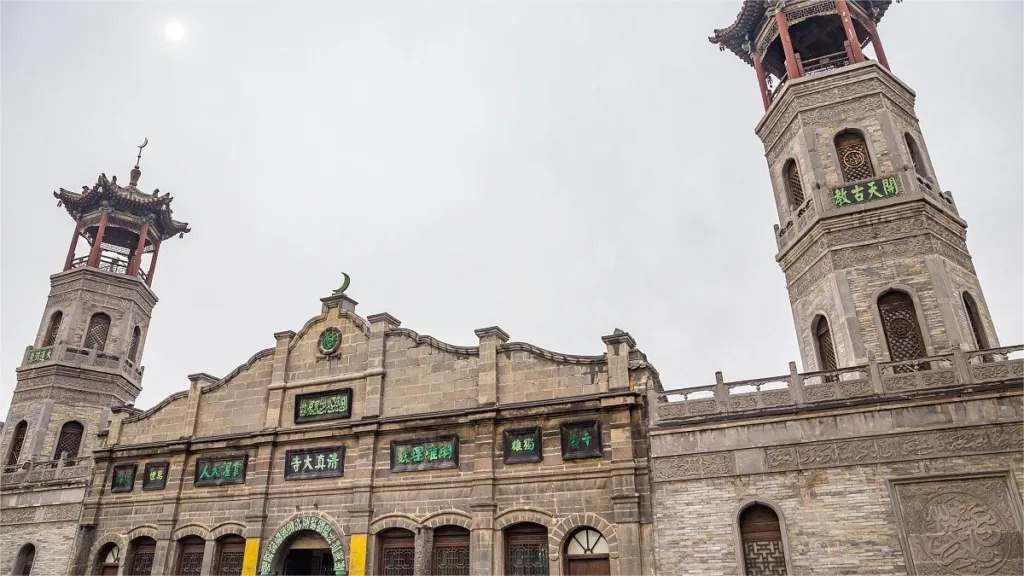The Datong City Wall (大同城墙) has a long and storied history, dating back to its original construction during the era when Datong served as the capital of the Northern Wei Dynasty under the Tuoba clan. The current structure was built in 1372 during the fifth year of the Hongwu reign in the Ming Dynasty by the great general Xu Da, who rebuilt the walls on the foundations of the older Han, Wei, Tang, Liao, Jin, and Yuan dynasties’ fortifications. This formidable wall has been a significant feature of Datong ever since.
The Datong City Wall features four main gates, each facing one of the cardinal directions: Heyang Gate to the east, Yongtai Gate to the south, Qingyuan Gate to the west, and Wuding Gate to the north. To facilitate transportation and accessibility, each main gate includes two smaller gates, making a total of twelve gates. Above these gates are various towers: city towers, moon towers, arrow towers, and lookout towers, which are interspersed between the main gates. Outside the gates are additional fortifications, including barbicans, moon gates, and a moat.
Table of Contents
- Basic Information
- Location and Transportation
- Structures of Datong City Wall
- Vlog about Datong City Wall
- History of Datong City Wall
- Other Attractions in Datong Ancient City
Basic Information
| Estimated Length of Tour | 1 hour |
| Ticket Price | Free |
| Opening Hours | 7.00 – 22.00; Last admission: 21.40 (Spring and Autumn) 7.00 – 23.00; Last admission: 22.40 (Summer) 7.00 – 21.00; Last admission: 20.40 (Winter) |
| Telephone Number | 0086-0352-7699269 |
Location and Transportation
The main gate of Datong Ancient City is located on the south side of the intersection of Beidu Street and Yongtai South Road in Pingcheng District, Datong City, Shanxi Province. To get there, you can take bus 35 or 61 and get off at Yongtai South Road Yingbin Street Junction (永泰南路迎宾街口站).
Structures of Datong City Wall
Qian Tower (乾楼): One of the four corner towers of the ancient Datong City Wall, Qian Tower is especially popular in autumn when its scenery is particularly stunning. Visitors often climb this tower to enjoy the views, earning it the nickname “Qian Tower Autumn Delight.” Many poets and scholars from the Ming and Qing dynasties visited this tower and wrote poems commemorating their experiences.
Yan Tower (雁塔): Originally named Wenfeng Tower, it is commonly known as Yan Tower due to the many wild geese that frequent the area in spring and summer. Located on the southern city wall, it was a place where scholars who had passed the imperial examinations would come to pray and celebrate. The tower’s walls are inscribed with the names and achievements of these scholars, serving as an inspiration for future generations to study diligently and achieve academic success.
Datong City Wall Ruins Exhibition Hall (大同城墙遗址陈列馆): Located within the eleventh lookout tower on the western city wall (at the southern end), this exhibition hall is dedicated to the history of the Datong City Wall. The museum’s exhibits focus on the rammed earth construction techniques of the Northern Wei, Liao, Jin, and Ming dynasties. The artifacts excavated from the city wall site provide additional context, showcasing the historical evolution, restoration processes, architectural features, and cultural significance of the Datong City Wall. The exhibition is divided into four sections: “Ancient Famous City,” “Flourishing Restoration,” “Golden City and Iron Pool,” and “Capital Screen,” which collectively offer a comprehensive overview of the wall’s history.
Guan City (关城): The South Small City, also known as Guan City, covers an area of 0.44 square kilometers and has four gates: Yinghui to the east, Yonghe to the south, Yongfeng to the west, and the northern gate, which was later rebuilt into Wenchang Pavilion in the 20th year of the Wanli reign (1592). The fortified structures were further enhanced over time, and the restored Guan City now spans 14,917 square meters and serves as a cultural activity square.
Hong Character Tower (洪字楼): This wooden three-eaved, two-story pavilion with a hipped roof stands 19 meters high. It features viewing platforms and defensive shooting windows on the front and sides, serving both as a vantage point for observing the surrounding area and as a defensive structure.
Military Control Platform (控军台): In ancient times, this platform allowed for observation of enemy movements from three sides and facilitated attacks on enemies, eliminating defensive blind spots. It also served as a base for placing cannons.
Vlog about Datong City Wall
History of Datong City Wall
The history of the Datong City Wall spans over two millennia, reflecting its enduring significance in Chinese history and culture. Dating back to the Warring States period, when Zhao Wuling King “Northern broke the Lin Hu, Lou Fan, and built the Great Wall,” Datong began its journey as a strategic administrative and defensive center in northern China.
During the Northern Wei Dynasty, starting from 398 AD, the city began its initial large-scale construction when Emperor Tuoba moved the capital to Pingcheng. Modeled after the city planning of Cao Wei’s Ye City and Han Dynasty’s Chang’an, Datong’s city construction integrated the cultural ideals of the Tuoba people.
The current structure of the Datong City Wall largely stems from the Ming Dynasty, specifically in 1372 during the Hongwu reign, when General Xu Da supervised the expansion of the city wall on the foundations of earlier Liao, Jin, and Yuan era earthworks. This marked the second major phase of construction for the Datong City Wall, solidifying its imposing presence as seen today.
Throughout the Ming and Qing dynasties, various enhancements and expansions were undertaken. During the Jingtai period (1450-1457), a northern small city known as Caochang City was added, later referred to as Beiguan. In the Tianshun period (1457-1464), additional eastern and southern small cities, known as Dongguan and Nanguan respectively, were constructed, each with a circumference of 2.5 kilometers. Defensive structures like Jule and Gaoshan Forts were also built during this period.
In the Hongzhi era (1500), further expansions to the east and west sides of the city were made, accompanied by the construction of gate towers. The city underwent substantial renovations during the Jiajing reign (1550), prompted by military threats from Mongol leader Altan Khan, necessitating reinforced defenses and heightened fortifications.
In the later years, during the Qing Dynasty, events such as the anti-Qing rebellion led by Jiang Gan in 1649 resulted in partial demolitions of the city wall, which were later repaired and reinforced by 1656. Throughout the Republican period (1912-1949), Datong endured periods of unrest and conflict, including battles during the Japanese occupation and the Chinese Civil War, which caused significant damage to the city walls, gates, and towers.
Post-1949, the city wall faced further challenges and deteriorations due to neglect and urban development pressures. By the mid-20th century, several gates were dismantled, and parts of the wall were repurposed for other uses or left to decay. However, efforts to preserve and restore the Datong City Wall gained momentum in the late 20th and early 21st centuries.
In 2008, significant restoration work began, focusing on reinforcing the rammed earth sections with brick coverings, ensuring structural integrity and historical authenticity. The culmination of these efforts was celebrated on November 18, 2016, when the Datong City Wall was successfully completed and fully connected, reaffirming its status as a testament to Datong’s enduring history and architectural legacy.








